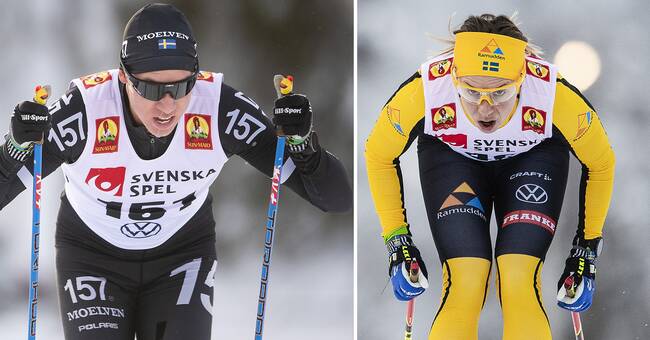The three biggest names to keep track of:
Ladies:
- Lina Korsgren who won six of eight races including the Vasaloppet last season, she is one of the big names, says expert Mathias Fredriksson.
- Britta Johansson Norgren has won Ski Classics five times in total.
She had a weird season last season when she froze her feet.
She is the one with the most victories.
- Marit Björgen, will not run all competitions, but she came second in the Vasaloppet so we have to include her.
Men:
- Emil Persson who won the total last season, he won four of the eight races so it was strong.
- Oskar Kardin was third in Ski Classics last year, Emil's childhood friend, he certainly wants to step up and challenge his friend.
- Martin Johnsrud Sundby, we do not know what he is like as a cross-country skier but we know that he has been good in traditional skiing.
There are extremely many talented Norwegians, but it can be anything for him.
Who are the favorites to win the overall cup?
- I probably think those who won last year (Lina Korsgren and Emil Persson) as favorites this season as well.
Both have strong teams, Emil is only 26 and under development.
Which newcomers do you think will be most interesting to follow?
- Max Novak he won everything all summer on roller skis and also won the premiere in Bruksvallarna last year.
So it will be interesting to see him during the season.
- Hanna Falk who has changed from sprinter to long distance skier.
A few races she will probably do well but will probably have a hard time delivering weekend after weekend.
A common prejudice is that it is those who did not succeed in the traditional skiing who run long distance races, is that correct?
- Not anymore, but that was also my prejudice.
And historically, you have to be mean and say that it has been a bit like that.
But look at Emil Persson who early on realized that he had been good at staking, so it's not like that anymore.
Now it is full service and there are completely different prize money and conditions than a few years ago.
How do Ski Classics work?
- The competitions are different lengths.
The longest is ten miles, ie one mile longer than the Vasaloppet.
- You drive in different teams, which means that you do not compete for your country but for a team with several different nationalities in. There is also a cup between the teams.
- Ladies and gentlemen drive the same distance, but the ladies usually get to start a little earlier.
Why do you only drive classic?
- I actually have no answer to that, I think it's about tradition in the classic Nordic races (Vasaloppet and Birkenbeinerrennet).
But I would have liked to have seen a freestyle race to broaden it.
It had been a development.
Why do they stake?
- Because it goes faster, the average course in long runs is quite flat and then in classic skiing it is clearly the fastest.
Which competitions are the biggest?
- The competitions are very much worth winning, you get a little more points in the bigger races.
The four biggest races together form the Grand Slam and if you win them all, you get a whole bunch of extra prize money.
The four Grand Slam races:
Marcialonga
Jizerska Padesatka
Vasaloppet
Birch leg race
Clip: Get an overview of the cross-country Cup Ski Classics
Javascript is disabled
Javascript must be turned on to play video
Read more about browser support
The browser is not supported
SVT does not support playback in your browser.
We therefore recommend that you switch to a different browser.
Read more about browser support
Here you can see the long-distance race cup
The different vests
Yellow (Ski Classics Champion) - worn by the leader in the overall cup.
Green (Sprint) - Worn by the one who has collected the most sprint points.
There are 0-2 sprints per race where the first seven get points.
Red / black checkered (Climb) - worn by the person who leads the mountain prize competition.
Here too 0-2 mountain prize per competition and the seven fastest get climbing points.
Pink (Youth) - worn by the one who is best placed in the total who is 26 years or younger.
Team competition - the overall best team wins the team competition.

